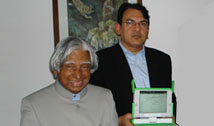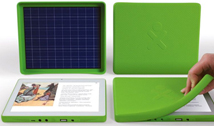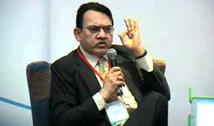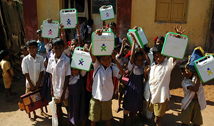

History
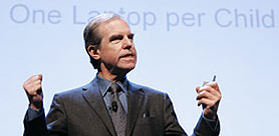
Although the release of the OLPC is relatively new, it has been an idea long in the making. Educators have seen and hoped for bringing the right technology to children all around the globe for a while and under Nicholas Negroponte's guidance, this dream is quickly becoming a reality.
Children and Technology
The idea of bringing technology to children and developing countries is not a new one. In 1982, Nicholas Negroponte and Seymour Papert brought Apple II computers to school children in Dakar, Senegal. Negroponte later founded the MIT Media Lab along with Jerome Wisner. At the MIT Media Lab, Papert created "The School of the Future" which brought computers to schools in Massachusetts where they learned to program in Logo. In 1988, LEGO/Logo became commercialized which enabled kids to program self-made robots using a computer. 10 years later, Lego released its more well-known, up to date variant, Mindstorms.
In 2002, Negroponte went to a small Cambodian village and gave 20 children laptops with internet connections. He noted how "the children and their families quickly innovate multiple uses for the machines and easily teach themselves to navigate the Internet." Meanwhile, Papert convinces Governor Angus King of Maine that "one-to-one is the only meaningful ratio for deploying computers to school children." As a result, 42,000 laptops were distributed state-wide to seventh-graders.
Conception of the $100 laptop
In early 2005, drawing from his previous success with distributing laptops to children in developing nations, Negroponte conceived the initial idea of the $100 laptop. He presented the idea at the World Economic Forum where it was extremely well received. John Markoff of the The New York Times called Negroponte the "Johnny Appleseed of the digital era."
Negroponte gained a lot of momentum as his idea was quickly backed by large corporate partners such as AMD, News Corp., Google, Red Hat, Quanta Computers, and Nortel. Additionally, by the end of the year, Negroponte had spoken to over 50 countries and already had several early adopters. These include President Olusegun Obasanjo of Nigeria who committed to one million units.


